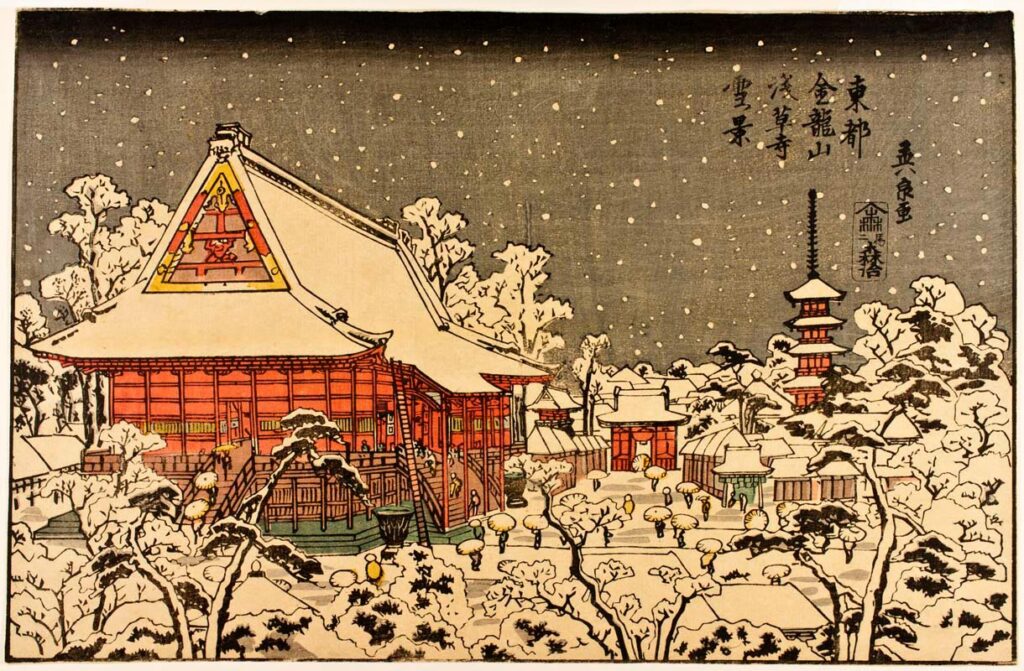
Snow Scene at Sensô-Ji Temple at Kinryûzan in the Eastern Capital 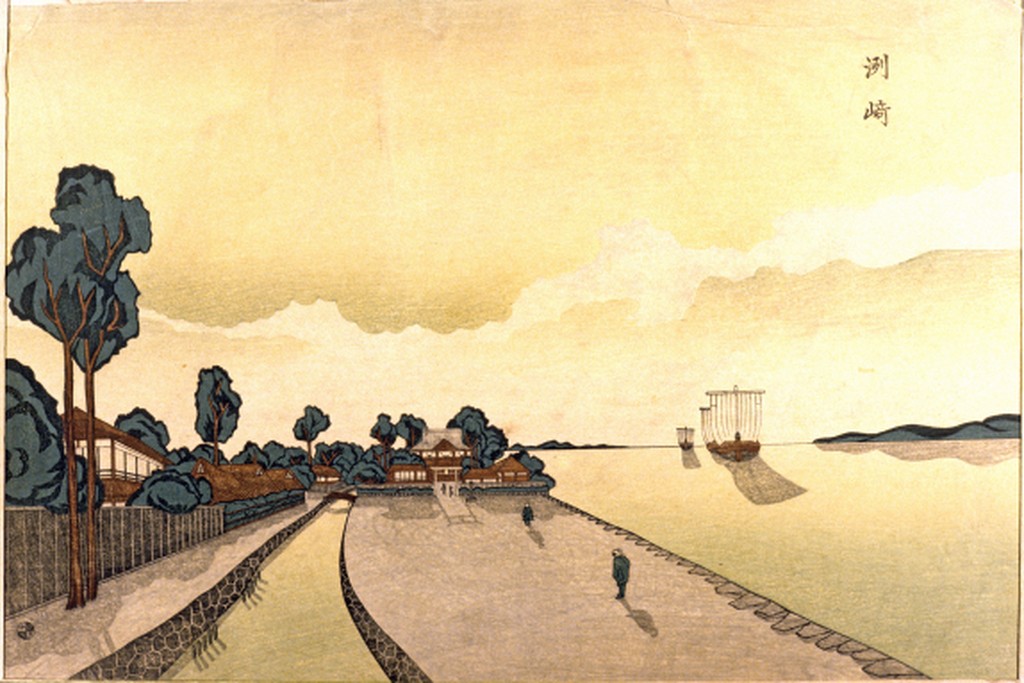
Susaki 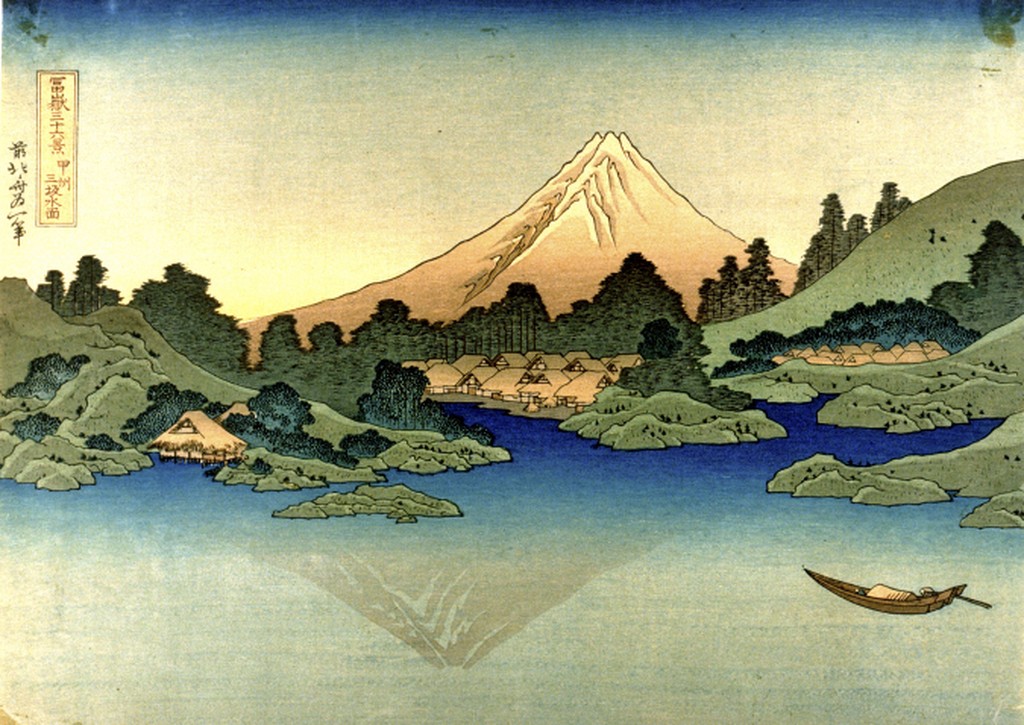
Reflection in the Lake at Misaka, Kai Province 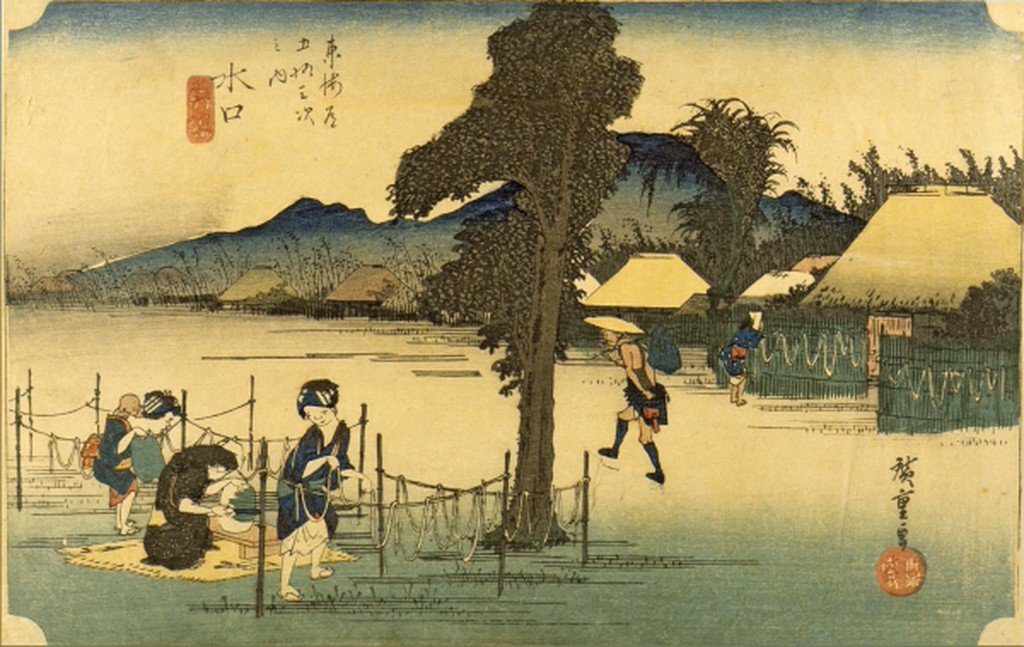
Drying Strips of Gourd, a Famous Product of Minakuchi 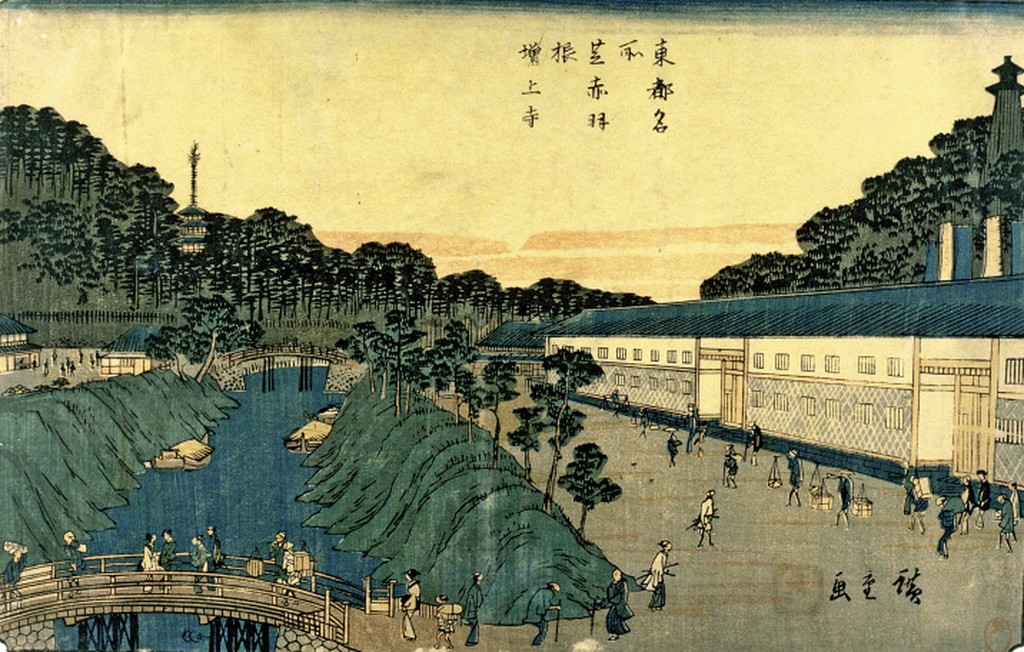
Tohto Famous Shiba Akabane Zojoji Temple 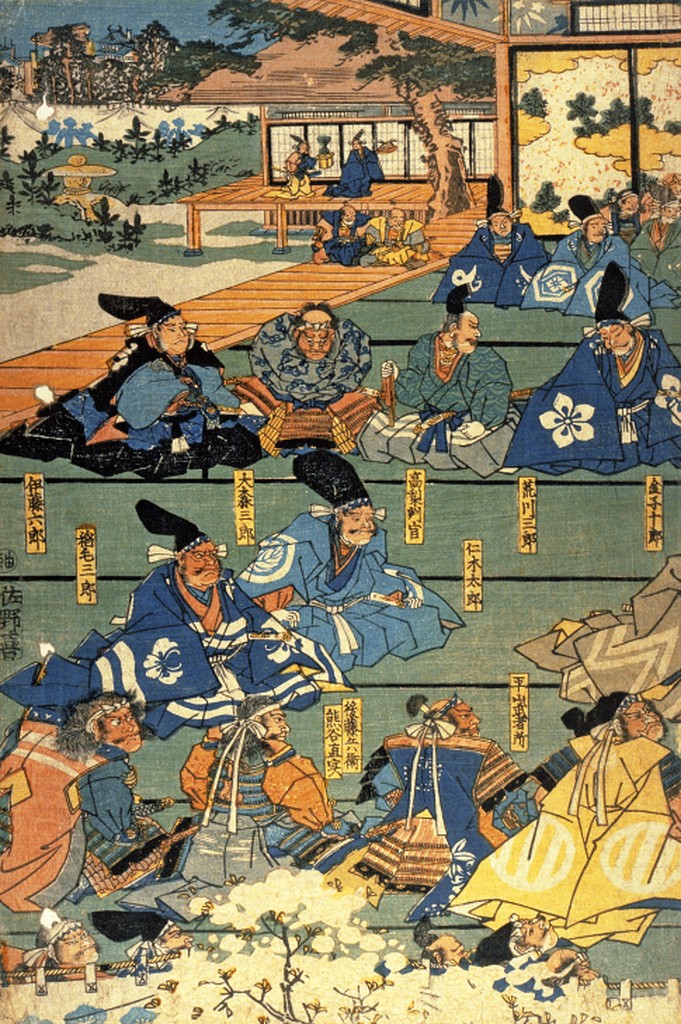
Triptych 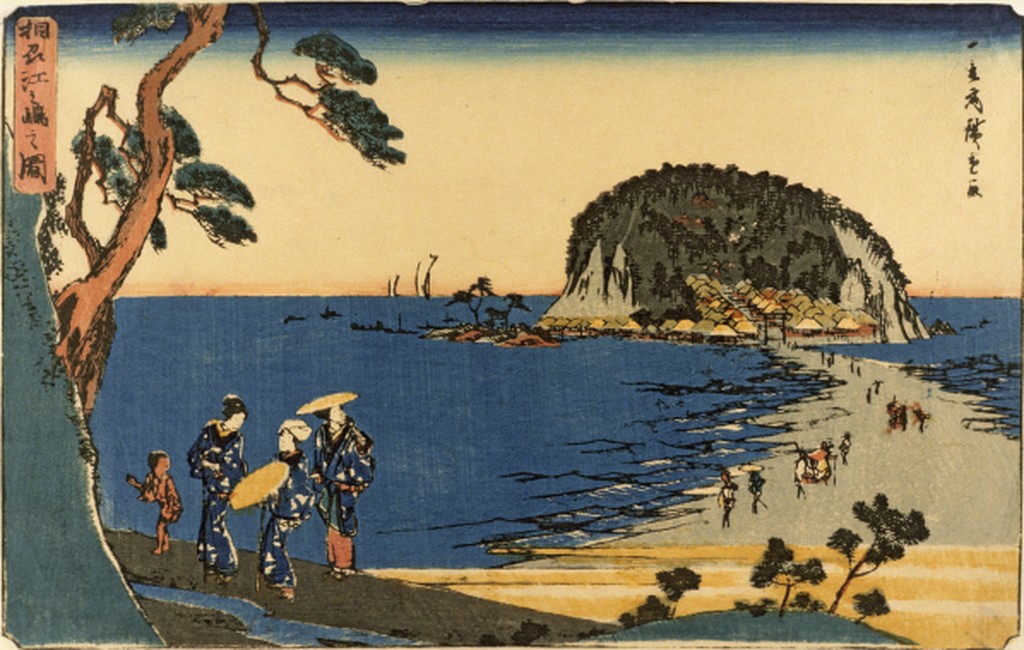
Enoshima In Sagami Province 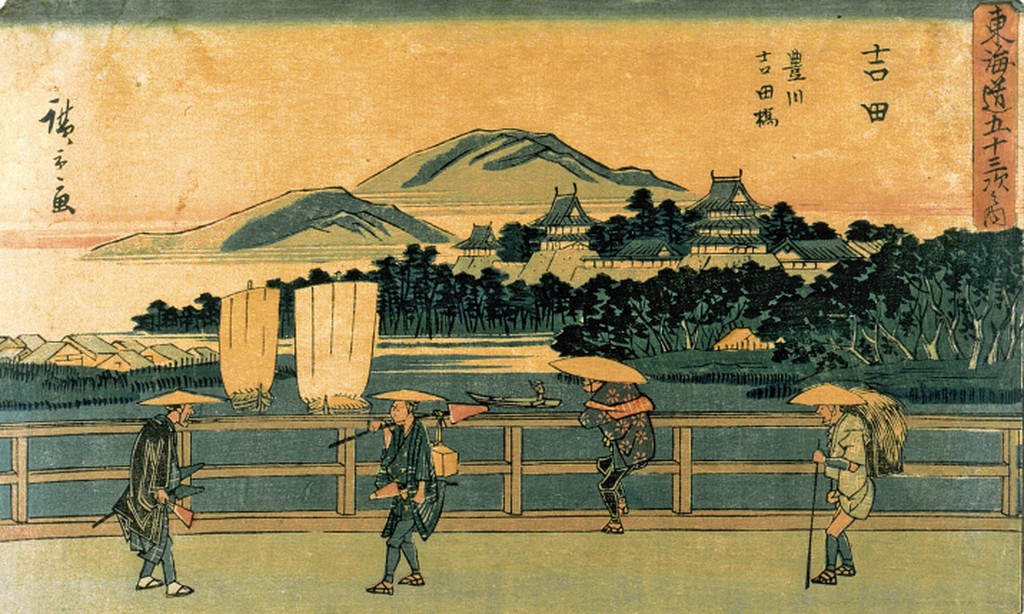
Toyokawa River and Yoshida Bridge 
Kanbara: Clear Weather after Snow 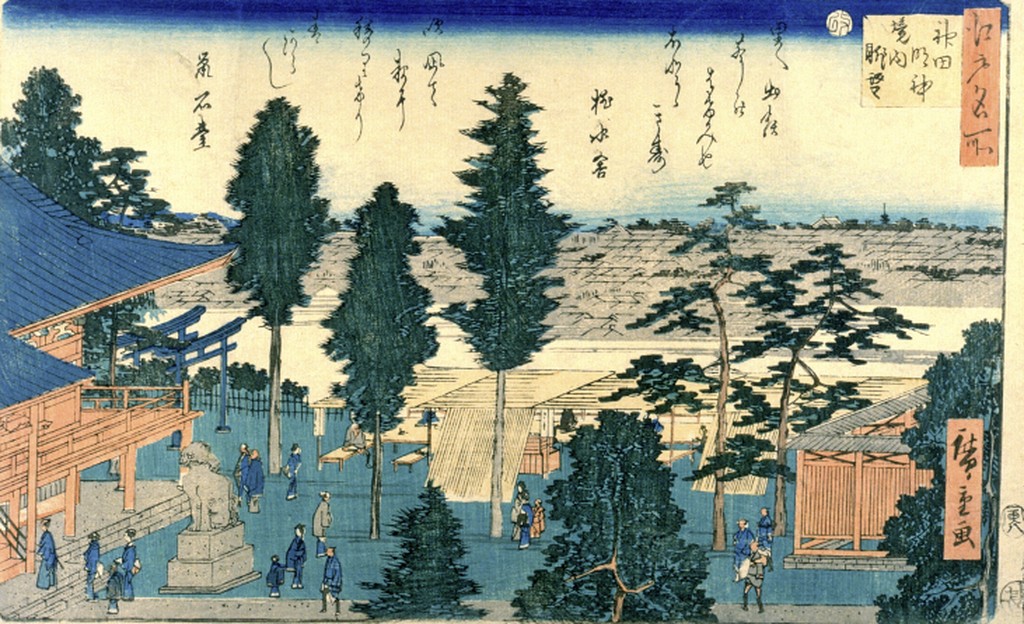
View From the Precinct of Kanda Myojin Shrine 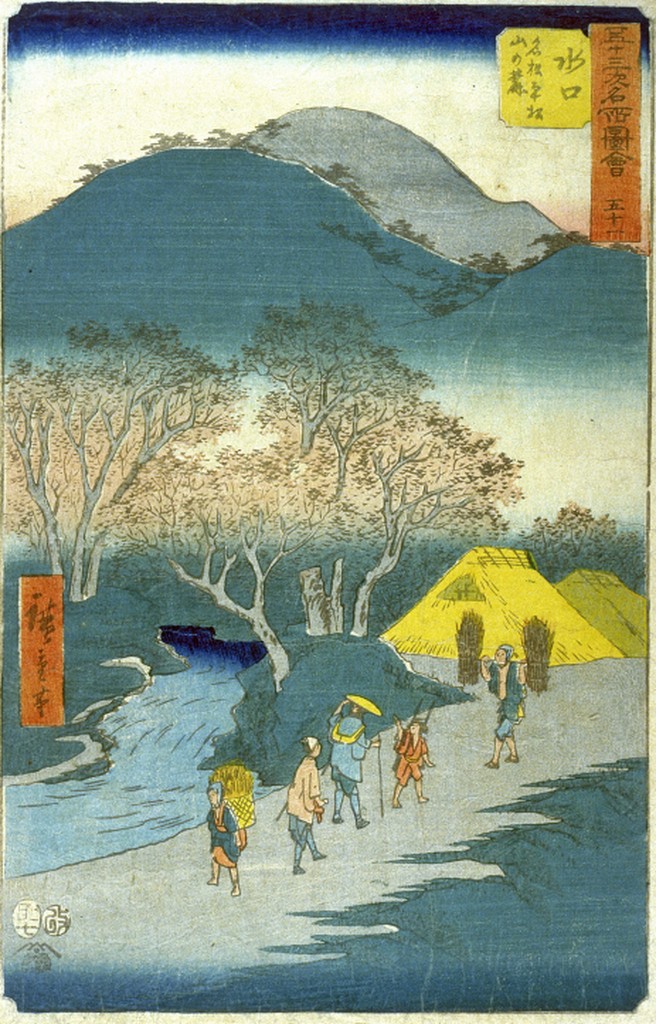
Minakuchi: The Famous Pine Trees at the foot of Mount Hiramatsu 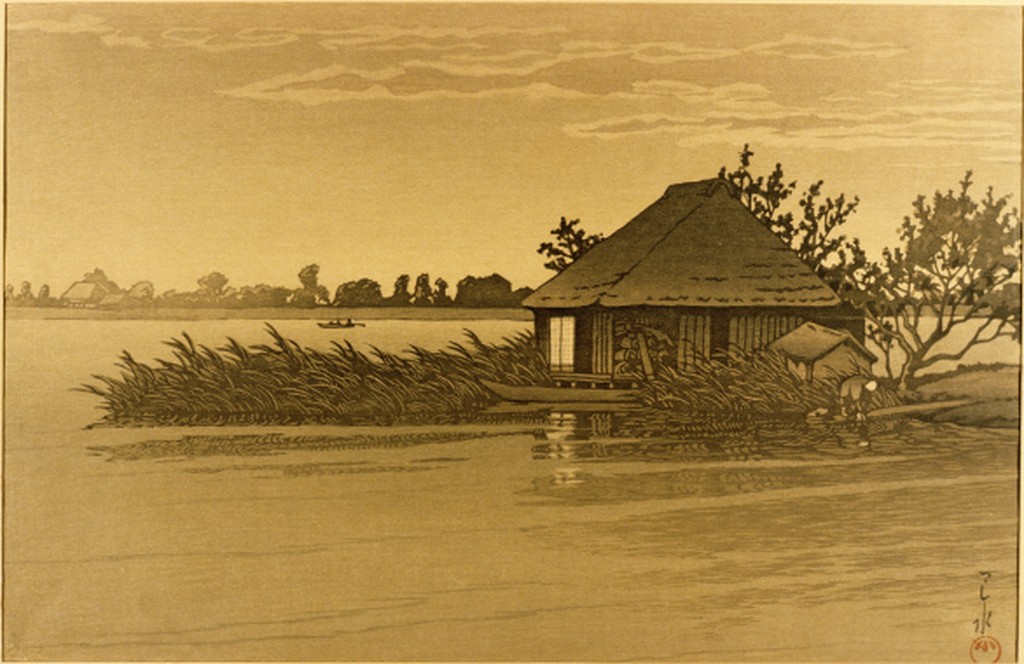
Tozaki, Ukishima, in Ibaraki Prefecture 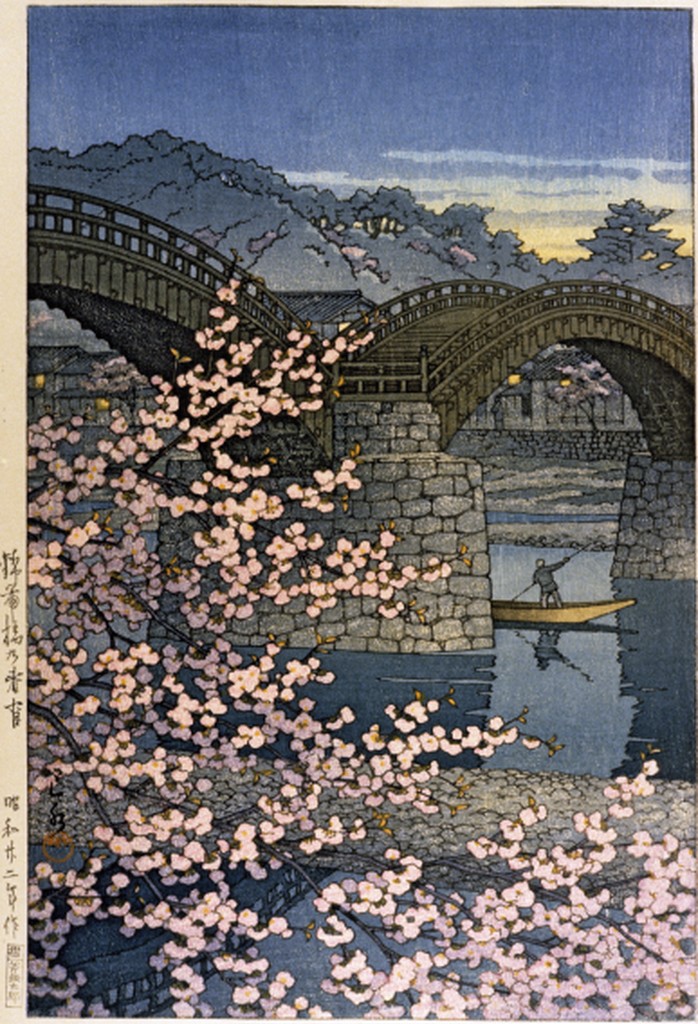
Spring Evening at the Kintai Bridge
Introduction
For my independent study, I focused on a series of Japanese woodblock prints that Connecticut College has in its collection. More specifically, I focused on the pictorial representations of the architectural/urban environment of the natural landscape in Edo-period Japan. I then investigated how such man-made and natural landscapes embody some of the cultural characters/specificities of the Japanese society during this time, as reflected by the woodblock prints. Since the acquisition of these woodblocks, minimal studies have been done or published on these masterpieces. My research on the prints, in this light, provides a basis for future research and it should benefit both faculty and students at Conn who use them for research and teaching.
This exhibition is comprised of 11 prints from the Edo-period (1603-1868), and 2 additional prints from the Shôwa-period (1912-1945), and Post-war period (1945-present) respectively.
Process
I began my journey by photographing all the woodblock prints that were a part of my series. I then took any information that was already done on a given print to know where to start searching. I employed a variety of techniques to find the names and authors of these prints, however I always started with a reverse image search. By uploading my photo of the print to google, I was able to search for related images. This didn’t always work, in fact it only worked for three out of the 11 prints.
My next approach was to look at the publisher seal. I managed to find a database of seals and started to find some matches. The database told me active years of the seals as well as the artist. Through the artist and a rough estimate of the year, I was able to document a fair number of the woodblock prints. However I still had a few left with no way of identifying them through the publisher seal. When I was unable to find the publisher’s seal online, I attempted to decipher the Japanese characters. I purchased multiple apps claiming to be able to translate photos of text, but this was unsuccessful. I even went as far as to write out the title of the prints themselves for the translator app and to no avail. I turned to the internet for help as my last resort, where my efforts were aided greatly. Not only were people generous to help on the r/translator page on reddit, they translated the text and had reliable sources.
Summary
Japanese architecture is very diverse and its connection with nature has always been an integral part in defining its relationship between structure and landscape. The building types found within these prints range from the sacred spaces of shrines and temples to the public spaces of the rural countryside and early city centers during the Edo period of Japan. The harmony between these allows spaces is to not only defined by their architecture but the surrounding landscape. In these prints, religious buildings are more private and contain gateways such as Torii’s to signify the division between sacred space and public space. They are also secluded and in the case of Enoshima in Sagami Province, the island provides the perfect place for a shrine. The more developed areas contain tall structures that dominate the landscape which not only signify power but representent a great divide in class. The rural structures in these prints are built in very traditional styles and are simple in design allowing them to be produced more rapidly. Their structural elements aren’t hidden, rather they are exposed to embrace their natural materials. Although these prints only capture a glimpse into the rich histories of Edo, they stand as a testament to the Japanese style of architecture and how after nearly two centuries little has changed.